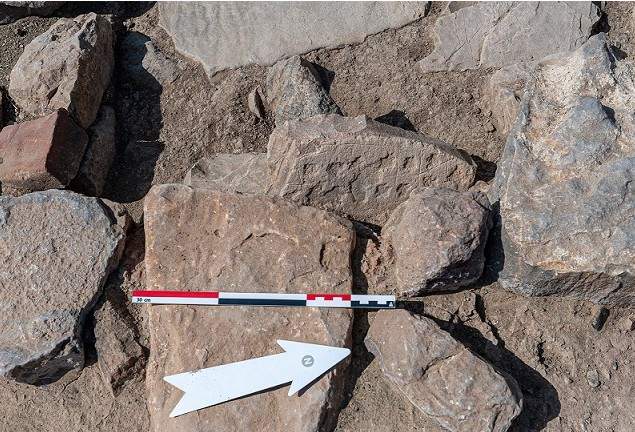A curious discovery came to light in late December as another season of archaeological fieldwork in the Qumayrah Valley in northern Oman came to a close. The main focus of the work of the team led by Prof. Piotr Bieliński, project director of the Polish Center for Mediterranean Archaeology, University of Warsaw (PCMA UW), were Bronze Age and Iron Age settlements located near the village of Ayn Bani Saidah.
But the most unexpected discovery of the mission was the discovery of a 4,000-year-old game board in one of the rooms of the settlement. The board is made of stone and has marked fields and holes. Games based on similar principles were played during the Bronze Age in many economic and cultural centers of that age. “Such finds are rare,” Prof. BieliÅ„ski explains, “but several examples are known from India, Mesopotamia, and even the eastern Mediterranean basin. The most famous example of a game board based on a similar principle is from the tombs of Ur.”
The research area, the Qumayrah microregion in Oman, is a mountain valley stretching from Bilt in the northeast to Ayn Bani Saidah in the southwest. The region, according to researchers, appears to have been far more significant than recently suspected and may yet reveal a number of surprising archaeological discoveries. During initial investigations, conducted since 2015, the valley turned out to be very rich in archaeological finds from at least five different archaeological periods. Archaeologists found that a human settlement was present there from the late Neolithic period, about 4300-4000 BC. And at both Ayn Bani Saidah and Bilt, tombs and settlements from the Umm an-Nar period can be seen. In addition, the remains of an Iron Age II settlement, c. 1100-600 B.C., were found to extend around the stony hills near Ayn Bani Saidah many times larger than originally thought.
“This abundance of settlement traces shows that this valley was an important place in the prehistory of Oman,” says Prof. BieliÅ„ski.
Next year, the team will continue work in the Qumayrah Valley, both at Ayn Bani Saidah and at Bilt, at the other end of the valley where other remains of Umm an-Nar are found.
The work is conducted as part of the Omani-Polish project The Development of Settlement in the Mountains of Northern Oman in the Bronze and Iron Ages led jointly by Prof. Piotr Bieliński (PCMA UW) and Dr. Sultan al-Bakri, Director General of Antiquities at the Ministry of Heritage and Tourism of the Sultanate of Oman. The project investigates the development and forms of settlement in one of the least studied corners of Oman: the mountain valleys of the northern Hajar range.
 |
| Oman, 4,000-year-old game board emerges from excavations |
Warning: the translation into English of the original Italian article was created using automatic tools. We undertake to review all articles, but we do not guarantee the total absence of inaccuracies in the translation due to the program. You can find the original by clicking on the ITA button. If you find any mistake,please contact us.